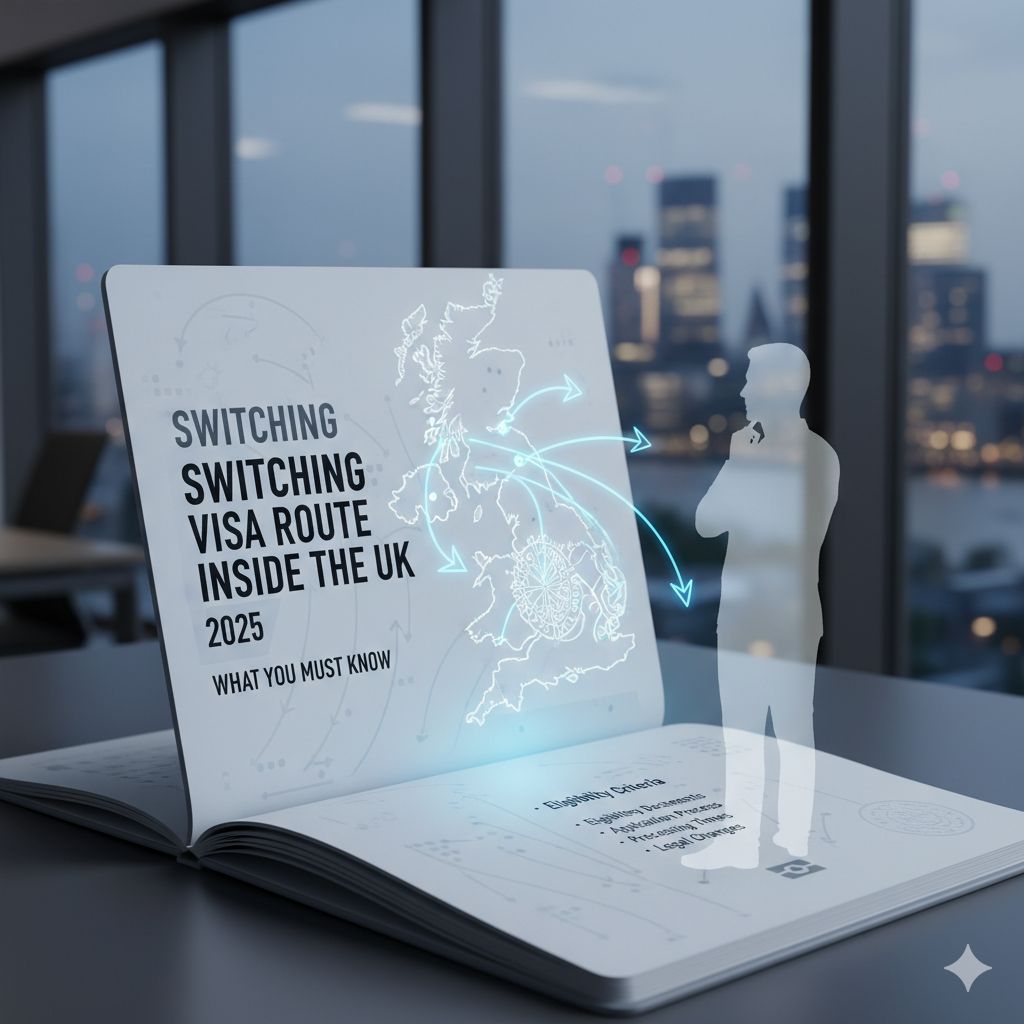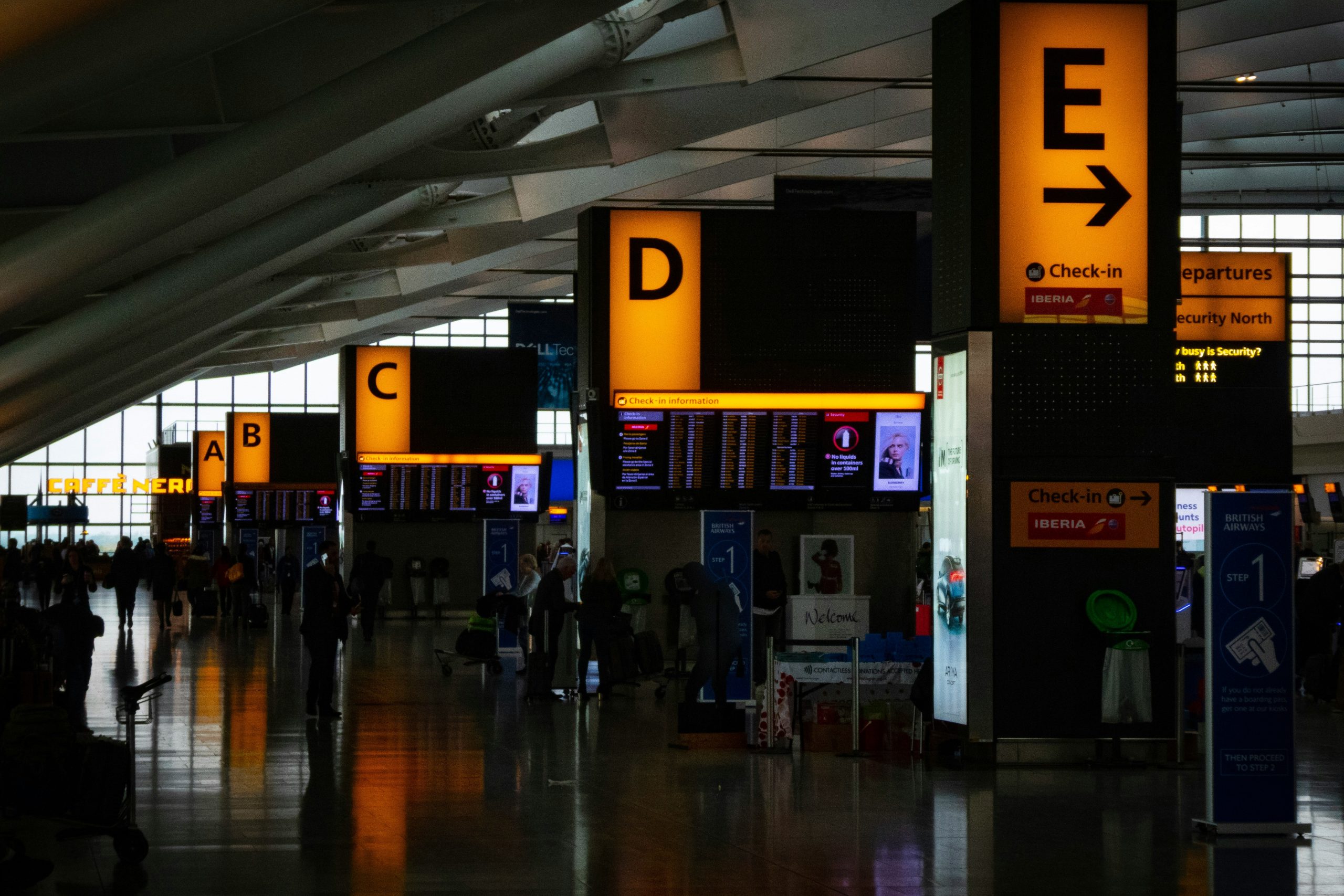Changing your visa route without leaving the UK is often the most practical way to continue your stay lawfully, but the immigration landscape has shifted again. The Home Office updates announced in October 2025 have tightened switching eligibility, raised qualification and salary thresholds, and introduced new digital requirements for applicants. Here’s what you need to know if you plan to switch visa categories inside the UK this year.
Can You Still Switch Visa Routes Inside the UK?
Yes, you can, but fewer routes now qualify for in-country switching. The Home Office’s October 2025 reforms, following the Restoring Control Over the Immigration System White Paper, narrowed eligibility in several areas. While switching remains possible for most long-term visa holders, temporary categories such as Visitor, Seasonal Worker, and Short-Term Student visas still require you to apply from outside the UK.
Visas You Can Usually Switch From
- Student (Tier 4) Visa – You can switch to a Skilled Worker or Graduate route if you’ve completed your course and meet the higher skill level now set at RQF Level 6.
- Graduate Visa – Eligible for switching to Skilled Worker, Health and Care, or Innovator Founder routes with an approved sponsor.
- Family or Partner Visa – May switch to another family route, or towards settlement, provided you continue to meet the financial and relationship tests.
- Skilled Worker Visa – You can switch employers or job roles if you obtain a new Certificate of Sponsorship and meet the updated salary threshold.
Visas You Cannot Switch From
- Visitor Visa
- Seasonal Worker Visa
- Short-Term Student Visa
- Parent of a Child Student Visa
- Domestic Worker Visa
Applicants in these categories must leave the UK and apply from abroad.
What Changed in October 2025
1. Stricter Skilled Worker Requirements
From 22 July 2025, the skill threshold rose to RQF Level 6, and the minimum salary requirement increased to £41,700 or the role’s “going rate”, whichever is higher. The October update confirmed this threshold will remain under review annually and may rise again in 2026.
2. English Language Requirement to Increase in 2026
The Home Office confirmed that from 8 January 2026, the English requirement for most work and family visas will rise to CEFR B2 (roughly A-Level proficiency).
Applicants planning to switch in late 2025 should act early to avoid being caught by the higher standard.
3. Settlement (ILR) Changes Ahead
The government announced plans to extend most routes to settlement from five to ten years unless applicants meet the “significant contribution” or “exceptional integration” criteria. Those switching to a Skilled Worker route will need to plan for a longer residence before qualifying for Indefinite Leave to Remain (ILR).
4. Tighter Sponsorship Oversight
Sponsor licence holders now face enhanced compliance inspections. Businesses supporting employees who are switching from other routes must ensure their HR records, job descriptions, and salary documentation meet the updated sponsorship duties.
5. Expansion of Digital eVisas
All switching applicants now receive digital eVisas instead of vignette stickers. Status updates, including right-to-work details, appear directly in your UKVI account. From late 2025, all visa holders must link their online immigration status to their passport.
How to Apply to Switch Visa Route in the UK
- Check Eligibility – Confirm that your current visa allows in-country switching and that your chosen route meets the new requirements.
- Submit the Online Application – Complete the Home Office form and pay the fee and Immigration Health Surcharge (IHS).
- Upload Documents – Use the UK Immigration: ID Check app or attend a UKVCAS appointment for biometrics and evidence submission.
- Await a Decision – Standard processing takes about eight weeks, though priority options may be available.
- Receive Your eVisa – Once approved, your new immigration status will appear in your UKVI account.
If your current visa is close to expiry, you must submit your application before your leave ends. Overstaying, even briefly, can have serious immigration consequences.
Common Mistakes When Switching Visa Routes
- Submitting before meeting qualification or sponsorship requirements
- Using outdated documents or missing information
- Failing to observe a cooling-off period where required
- Omitting dependants or failing to submit their applications simultaneously
When You Must Apply from Outside the UK
Some categories still require an out-of-country application, particularly temporary visas. For example, if you are in the UK on a visitor visa and receive a job offer, you must return to your home country to apply for a Skilled Worker Visa.
Legal Advice for Switching Visa Routes
Because immigration rules are frequently revised, legal guidance can be invaluable. Working with an immigration solicitor ensures your application aligns with current eligibility standards, avoids delays, and minimises the risk of refusal. Professional help is especially important if:
- You have previous visa refusals or overstays
- You are switching from a temporary category
- Your sponsor has changed or lost their licence
- You are unsure whether your job meets new salary and skill requirements
How Hi Solicitors Can Help
Hi Solicitors assists individuals and employers with in-country visa switches under the latest 2025 immigration framework. The team reviews your eligibility, ensures your application complies with updated Home Office criteria, and helps prepare supporting documentation. Hi Solicitors also advises employers on sponsorship obligations and audits to remain compliant under the revised system.
Frequently Asked Questions
Can I switch from a Student Visa to a Skilled Worker Visa?
Yes, if you’ve completed your course and your job meets the higher skill and salary thresholds now in force.
Can I switch to a Spouse Visa from another category?
Yes, if you meet the financial, accommodation, and relationship rules. Visitor visa holders must apply from abroad.
How long does switching take?
Most decisions take up to eight weeks, but some applications qualify for a paid priority service.
Do I need to leave the UK to switch visas?
Only if your current visa category does not allow switching, such as visitor or seasonal worker visas.
What happens if my visa expires while I wait for a decision?
If you applied before your visa expired, your rights continue under Section 3C leave until the Home Office issues a decision.
More blog topics:
Indefinite Leave to Remain After 5 Years
Why UK Visa Applications Are Refused
Deportation from the UK: Process, Legal Rights, and What to Expect





